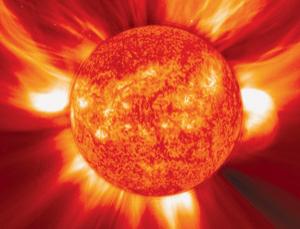AI to predict Sun’s next attack on Earth
December 20, 2011 | Source: New Scientist
Piet Martens of Montana State University and colleagues have developed 15 programs that use data from NASA’s Solar Dynamics Observatory (SDO) and image-processing techniques such as contour or edge recognition to automatically identify features on the sun’s surface.
To make the process generic, Martens’ team is using techniques developed to identify breast tumors. This involves splitting a 1.6-million-pixel image into 1024 blocks. For each block, the software calculates the values for various mathematical parameters, such as the entropy (a measure of the chaos in the image).
This turns the image into a series of numbers. In breast imaging, this technique highlights regions of breast tissue with specific values that are known to be characteristic of tumors. Martens’s team is doing this with SDO images, training the software to learn the defining characteristics of sunspots, filaments and other solar features.
Each program is looking for a different aspect of solar activity. This include flares and CMEs, as well as other features that might indicate that flares or eruptions are imminent, such as filaments, which are bundles of plasma held down by magnetic field lines, coronal loops and sunspots.
Solar storms can wreak havoc on Earth, but if we can predict them, vital infrastructure could be saved.
Ref.: David Pérez-Suárez et al., Automated Solar Feature Detection for Space Weather Applications, arxiv.org/abs/1109.6922
